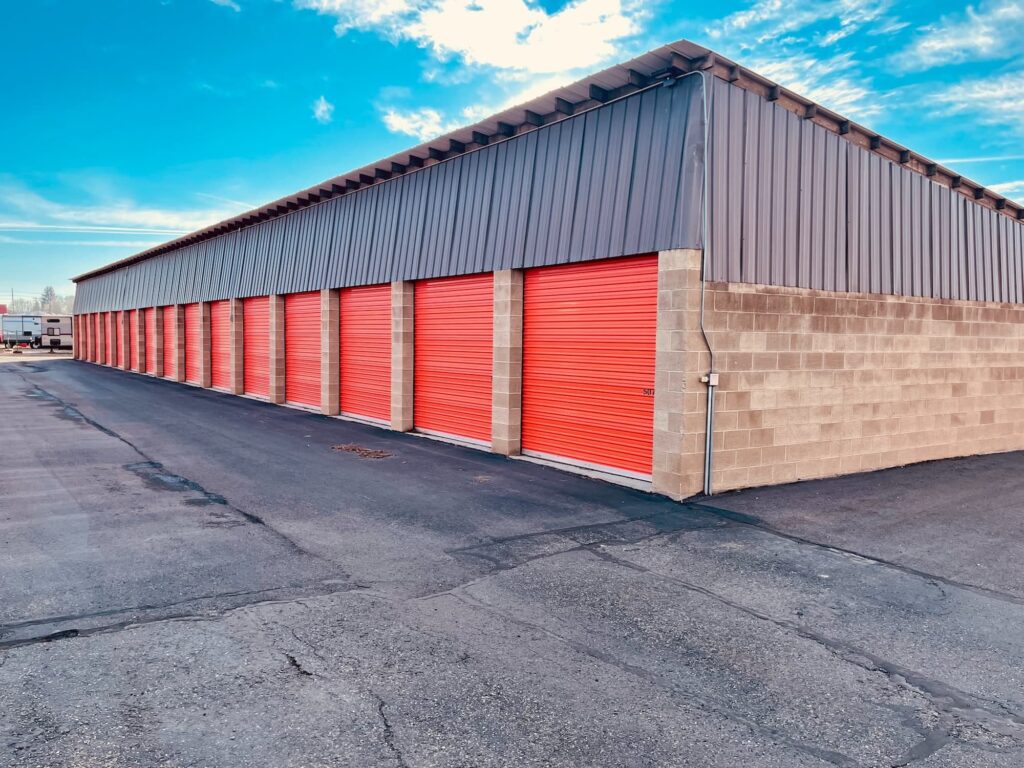Posted on October 13, 2022
The 3 Surprising Property Types Contributing to the Booming CRE Market in Texas
Despite widespread anxiety over near-record inflation, commercial real estate in Texas continues to be one of the engines driving the state’s humming economy. To understand why, it’s important to understand the unprecedented confluence of factors making Texas such an attractive market for builders, developers, and investors.
- In 2021, more than 60 corporations moved their headquarters to Texas. (Source: YTexas.com)
- 2019 marked the “seventh year in a row that Texas attracted more than 500,000 new residents from out of state.” (Source: Texas REALTORS)
- “Texas led the South region in 2021 with $114.13 billion in construction starts, a 7% increase” over 2020. (Source: Dodge Data & Analytics)
- Texas continues to be among the national leaders in industrial, retail, and office occupancy rates. (Source: Federal Reserve Bank of Dallas/CoStar)
LPA’s CRE valuation experts in Dallas, Fort Worth, Austin, Houston, San Antonio, Lubbock, Corpus Christi, and El Paso have extensive firsthand knowledge of these trends. Thanks to the breadth and depth of their expertise, they also have unique insights into how these trends are impacting commercial properties of nearly every type.
In this article, LPA’s appraisers discuss three “niche” asset classes that CRE stakeholders in Texas should be watching as closely as distribution centers, co-working spaces, and townhomes.

1) Self-storage
According to Brian Bormann (LPA San Antonio), “wherever there’s a major influx of population” in Texas, self-storage facilities are in high demand.
“The housing market in Texas is very competitive, as many people are relocating to major metro areas within the state for either work or personal reasons,” he explains. “At the same time, many people in the older generations are downsizing from single-family residences to apartments or townhouses. If you’re moving from a house to an apartment, you’re likely going to need some offsite storage.”
Self-storage facilities are evolving to attract these new tenants. “We’re seeing a transition away from older metal buildings and a concentration of facilities in industrial areas of town,” Brian observes.
However, the growing demand for self-storage isn’t limited to Texas’ big metros: DFW, Austin, San Antonio, and Houston. “We’re seeing it in surrounding areas, too,” Brian explains. “Tenants want convenience, so self-storage facilities are moving closer to them. The buildings themselves are now also often constructed of higher-quality materials. Developers are making an effort to integrate them into these more residential neighborhoods. For example, by giving them masonry facades and making them look almost like any other retail establishment from a street view.”
Despite the increasing importance of location, quality of construction, and amenity mix, the variables that have traditionally determined any given self-storage facility’s market value still apply. Primary among those variables are square footage, unit density, and income stream. Further, as Brian points out, “no two self-storage properties are ever the same.”
“One facility might be 100-percent standard, non-climate-controlled while another might offer a variety of standard and climate-controlled units. Some of the newer facilities are exclusively climate-controlled,” he says. “Some offer long-term parking for boats and RVs, and others might contain units that deviate from the standard unit mix (5’ X 5’, 10’ X 10’, 10’ X 20’, etc.). These unique unit sizes can present market research challenges. And most facilities consist of multiple buildings. Site inspections might involve anything from eight to 10 structures to one or two.”
However difficult it may be to arrive at a reasonable opinion of value for a self-storage facility, Brian welcomes the challenge. “It’s always fun to digest the unit mix of a self-storage property and then see what you can find,” he acknowledges. “Ultimately, the more knowledge I have of a specific property type, the better my analysis will be.”

2) RV and mobile home parks
Asked if there’s one thing CRE stakeholders should know about the state of RV and mobile home parks in Texas, Kelsey Regan (LPA Dallas) responds: “These properties have changed dramatically over the years. Many newer mobile home parks are just as nice as unit housing.”
To understand what’s behind this upgrade, Kelsey says it’s important to consider the lifestyle choices more and more Texans are making. “You have both Baby Boomers and Millennials downsizing. You have people working remotely, from anywhere, because of the pandemic. And you have more and more tourists coming to and traveling within Texas,” she observes. “So you have a lot of people looking for high-quality manufactured housing, both on a permanent and temporary basis. They’re finding it in RV and mobile home parks.”
Investors have taken notice too. “Since 2020, I’ve probably appraised 20 proposed RV/mobile home parks, if not more, and cap rates are on a steady decline,” she reveals. “M&A activity has something to do with this. We’re seeing big developers acquire RV parks and convert them into mobile home parks or investment-grade RV parks. At one of the developments I most recently appraised, individual units were going for more $90,000. When I started focusing on this property type two years ago, similar units were priced around $50,000.”
What other factors affect the value of RV and mobile home parks? Not surprisingly, seasonality and location top the list. “RV parks along the Gulf Coast count on the winter months to drive occupancy,” she explains. “Here in North Texas, though, owners and operators are more concerned with renting out the most units month over month. So you really have to understand where you are on the map when assessing these properties. That means you also have understand the surrounding infrastructure: for instance, interstate highways, or state and national recreation areas.”
Because long-term stays are a major revenue generator for many RV and mobile home park owners and operators, Kelsey says taking an income approach is critical to arriving at a reasonable opinion of value. “Luckily, I also appraise a lot a lot of large shopping centers. Between that and this specialization, I’ve really been able to hone my skills in that area.” She adds: “I’ve also learned a lot from having to work out the complexities of each RV or mobile home park’s FF&E. Do they have vending machines onsite? Laundry rooms? That sort of thing.”
Looking ahead, Kelsey sees the potential for more growth in this sector. “There’s more and more interest in tiny homes,” she notes. “It’ll be interesting to see if some mobile home park owners start placing tiny homes on their pads. Tony homes are more permanent structures that offer extra benefits to tenants, like better weatherization and energy-efficiency. But they still offer a lot of the benefits of mobile homes, like a smaller footprint. Tiny homes could open up whole new adaptive reuse possibilities for these properties.”

3) Gas stations and convenience stores
Texas has long been celebrated for its wide-open spaces. And, despite the urbanization that’s radically altering the state’s landscape, it’s still home to approximately 600,000 acres of undeveloped land. But that also means that long drives — and frequent stops to gas up — are a fact of life for nearly every Texan.
According to the U.S. Energy Information Administration, there are over 11,000 gas stations and convenience stores (C-stores) that sell gasoline in Texas. According to the U.S. Census Bureau, those gas stations and C-stores will earn nearly $40 billion in revenue in 2022. In other words, gas stations and C-stores are an outsized presence within the state’s retail markets.
For Morgan Pavloske (LPA Houston), certain nuances make these properties stand out even more. “Convenience stores / gas stations are technically retail establishments, but they’re very different from any other retail business because of their smaller building size, fuel pumps, and FF&E,” she says. “Their property values are very sensitive to land-to-building ratio as well as square-footage adjustments. Shelf space matters just like in any general retail store, but you also have to factor in how many vehicles the C-stores can serve at any one time.”
Who owns an individual gas station can also make a big difference in terms of determining its value. “If you are appraising an owner-occupied C-store, rather than a franchise like 7-11, you have to consider both FF&E and business value,” she notes. “In the Houston market, owner-occupied c-stores are a lot more prevalent than in a market like Dallas-Fort Worth; however, you are starting to see more of the Absolute Net leased properties pop up. Because I appraise both kinds of convenience stores / gas stations, I quickly learned how to analyze profit and loss statements and conclude an allocation to going concern / intangible business value.”
Additionally, Morgan has learned that age of construction is another factor that often influences property values. “The Absolute Net leased properties, like the 7-11s, are usually proposed deals. But the owner-occupied C-stores are usually acquisitions or refinances of older properties.”
However, in Morgan’s experience, the richest source of valuable information about convenience stores / gas stations isn’t always to be found in financial disclosures or transaction databases. “There’s a story with every C-store,” she explains. “The more familiar you get with this market, the more it seems like everybody knows everybody else. So it is imperative to learn about each property’s history. For example, an owner-occupied C-store transaction may be a non-arm’s length transaction, which adds a lot of context to the purchase price. So I always try to establish a rapport with the property owner and gather as much business intelligence as I can. I think that’s probably a best practice anyone in this profession should follow regardless of which property type they’re appraising.”
Conclusion:
It takes special skills and dedication to keep pace with the rapidly evolving nature of CRE in Texas. Properties that were “under the radar” 3 months ago may be the focus of considerable attention tomorrow. To navigate a market this volatile, you need more information than you would typically get from an Automated Valuation Model (AVM). You need the kind of insights you can only get from multiple points of view. The best appraisers appreciate as much — and provide that perspective.
Do you have a unique or unusual commercial real estate appraisal need? LPA can help. We cover all property types, from the more widely known to those that require additional attention and assessment. And, no matter your needs, we’ll deliver accurate reporting on-time, every time. To begin working with one of our valuation experts today, contact us at one of our 8 Texas locations.

